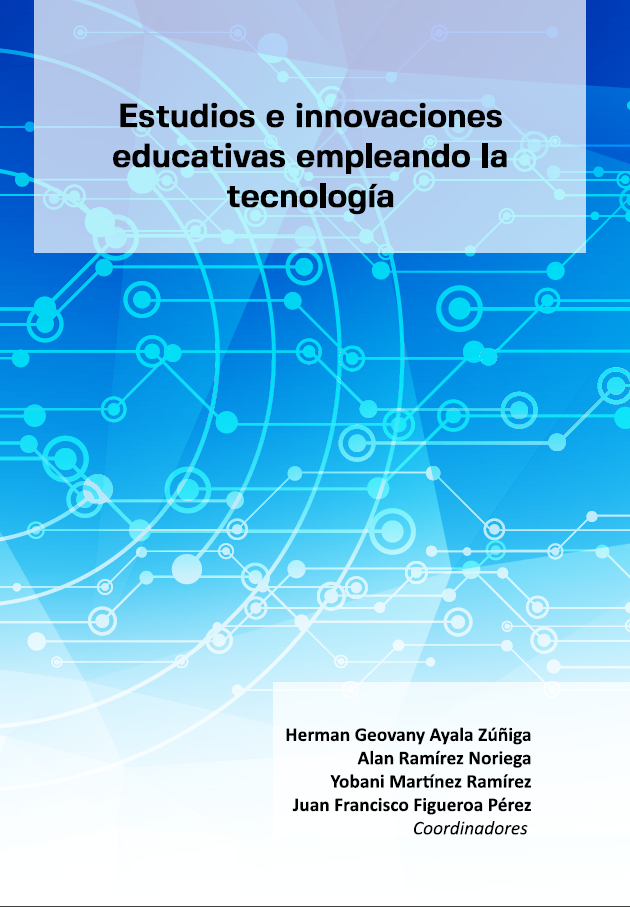Rolando Bautista Morales
ORCID: 0009-0006-3889-1226
Universidad Autónoma Indígena de México
Yobani Martínez Ramírez
ORCID: 0000-0002-4967-9187
Universidad Autónoma de Sinaloa
Alan Ramírez Noriega
ORCID: 0000-0002-8634-9988
Universidad Autónoma de Sinaloa
José Emilio Sánchez García
Universidad Autónoma Indígena de México
Acerca de
El presente artículo tiene como propósito realizar una revisión sistemática de literatura (RSL) con la finalidad de explorar las nuevas tecnologías que están emergiendo en el campo de la inteligencia artificial (IA) (Cabe mencionar que estas) están enfocadas en redimir a aquellas lenguas que presentan escasos recursos lingüísticos (ERL) y que, por lo anterior, se encuentran en peligro de extinción. Conviene destacar que la traducción automática (TA) y las redes neuronales son los principales subcampos de la IA que han aportado posibles soluciones a este problema. Este trabajo se enfoca en…
… analizar a aquellas investigaciones que utilizan el modelo de red neuronal llamada Transformer. Para ello, se implementa el método estándar de RSL, el cual examina una serie de 60 documentos científicos que han sido publicados en los últimos años. A grandes rasgos, los objetivos de este estudio son identificar los procesos de construcción de los traductores automáticos neuronales (TAN), precisar las herramientas que se utilizan en cada una de sus etapas, y, por último, evaluar el grado de eficacia alcanzada. Los resultados de este trabajo facilitaron una visión general del estado actual de la investigación en este campo.
Referencias
Alegria, I., Artola, X., De Ilarraza A. D., & Sarasola, K. (2011). Strategies to develop language technologies for less-resourced languages based on the case of Basque.
Andrabi, S. A. B., & Wahid, A. (2022). Machine Translation System Using Deep Learning for English to Urdu. Computational Intelligence and Neuroscience, 2022. https://doi.org/10.1155/2022/7873012
Budgen, D., & Brereton, P. (2006). Performing systematic literature reviews in software engineering. Proceedings of the 28th International Conference on Software Engineering, 1051–1052. https://doi.org/10.1145/1134285.1134500
Chakravarthi, B. R., Rani, P., Arcan, M., & McCrae, J. P. (2021). A Survey of Orthographic Information in Machine Translation. SN Computer Science, 2(4), 330. https://doi.org/10.1007/s42979-021-00723-4
Chen, W.-R., & Abdul-Mageed, M. (2022). Improving Neural Machine Translation of Indigenous Languages with Multilingual Transfer Learning. http://arxiv.org/abs/2205.06993
Comunity Hugging Face. (2022). https://huggingface.co/learn/nlp-course/chapter6/6?fw=pt
Comunity python. (2023). https://pypi.org/project/subword-nmt/
Duy, C., Hoang, V., Koehn, P., Haffari, G., & Cohn, T. (2018). Iterative Back-Translation for Neural Machine Translation. 18–24.
Feldman, I., & Coto-Solano, R. (2020a). Neural Machine Translation Models with Back-Translation for the Extremely Low-Resource Indigenous Language Bribri. Online.
Feldman, I., & Coto-Solano, R. (2020b). Neural Machine Translation Models with Back-Translation for the Extremely Low-Resource Indigenous Language Bribri. Proceedings of the 28th International Conference on Computational Linguistics, 3965–3976. https://doi.org/10.18653/v1/2020.coling-main.351
Huarcaya, D. (2020). Traducción automática neuronal para lengua nativa peruana.
Ierandi, C., Orihuela Espina, L., Jurado Flores, I., Rodríguez del Nozal, Á., & Tapia Córdoba, A. (2020). Revisión sistemática de la literatura en ingeniería de sistemas. Caso práctico: técnicas de estimación distribuida de sistemas ciberfísicos. 84–91. https://doi.org/10.17979/spudc.9788497497749.0084
Incrustaciones de palabras, TensorFlow. (2022). https://www.tensorflow.org/text/guide/word_embeddings?hl=es-419
Jimerson, R., & Prud’Hommeaux, E. (2018). ASR for Documenting Acutely Under-Resourced Indigenous Languages. https://aclanthology.org/L18-1657
Junczys-Dowmunt, M., Grundkiewicz, R., Dwojak, T., Hoang, H., Heafield, K., Neckermann, T., Seide, F., Germann, U., Aji, A. F., Bogoychev, N., Martins, A. F. T., & Birch, A. (2018). Marian: Fast Neural Machine Translation in C++. Proceedings of ACL 2018, System Demonstrations, 116–121. https://doi.org/10.18653/v1/P18-4020
Keras: Deep Learning para humanos. (2023). https://keras.io/
Knowles, R., Stewart, D., Larkin, S., & Littell, P. (2021). NRC-CNRC Machine Translation Systems for the 2021 AmericasNLP Shared Task. Proceedings of the First Workshop on Natural Language Processing for Indigenous Languages of the Americas, 224–233. https://doi.org/10.18653/v1/2021.americasnlp-1.25
Kreutzer, J., Bastings, J., & Riezler, S. (2019). Joey NMT: A Minimalist NMT Toolkit for Novices. Proceedings of the 2019 Conference on Empirical Methods in Natural Language Processing and the 9th International Joint Conference on Natural Language Processing (EMNLP-IJCNLP): System Demonstrations, 109–114. https://doi.org/10.18653/v1/D19-3019
Lamraoui, F., & Langlais, P. (2013). Yet Another Fast, Robust and Open Source Sentence Aligner. Time to Reconsider Sentence Alignment? http://www.statmt.org/
Le, N. T., & Sadat, F. (2020). Revitalization of Indigenous Languages through Pre-processing and Neural Machine Translation: The case of Inuktitut. Online. https://github.com/huggingface/transformers
Marcus, G. (2018). Deep Learning: A Critical Appraisal.
Moatez, E., Nagoudi, B., Chen, W.-R., Abdul-Mageed, M., & Cavusoglu, H. (2021). IndT5: A Text-to-Text Transformer for 10 Indigenous Languages. https://github.com/UBC-NLP/IndT5
Nekoto, W., Marivate, V., Matsila, T., Fasubaa, T., Kolawole, T., Fagbohungbe, T., Akinola, S. O., Muhammad, S. H., Kabongo, S., Osei, S., Freshia, S., Niyongabo, R. A., Macharm, R., Ogayo, P., Ahia, O., Meressa, M., Adeyemi, M., Mokgesi-Selinga, M., Okegbemi, L., … Bashir, A. (2020). Participatory Research for Low-resourced Machine Translation: A Case Study in African Languages. Findings of the Association for Computational Linguistics Findings of ACL: EMNLP 2020, 9, 2144–2160. https://doi.org/10.18653/V1/2020.FINDINGS-EMNLP.195
Rai, S., Belwal, R. C., & Gupta, A. (2023). Is the Corpus Ready for Machine Translation? A Case Study with Python to Pseudo-Code Corpus. Arabian Journal for Science and Engineering, 48(2), 1845–1858. https://doi.org/10.1007/s13369-022-07049-0
Vaswani, A., Shazeer, N., Parmar, N., Uszkoreit, J., Jones, L., Gomez, A. N., Kaiser, Ł., & Polosukhin, I. (2017). Attention Is All You Need. Advances in Neural Information Processing Systems, 2017-December, 5999–6009. https://arxiv.org/abs/1706.03762v5
Veliz, O. M. (2021). The REPU CS’ Spanish–Quechua Submission to the AmericasNLP 2021 Shared Task on Open Machine Translation. Proceedings of the 1st Workshop on Natural Language Processing for Indigenous Languages of the Americas, AmericasNLP 2021, 241–247. https://doi.org/10.18653/V1/2021.AMERICASNLP-1.27
Xu, B. (2022). English-Chinese Machine Translation Based on Transfer Learning and Chinese-English Corpus. Computational Intelligence and Neuroscience, 2022. https://doi.org/10.1155/2022/1563731
Zacarías, D., & Meza, I. (2021). Ayuuk-Spanish Neural Machine Translator. https://github.com/anoidgit/yasa

